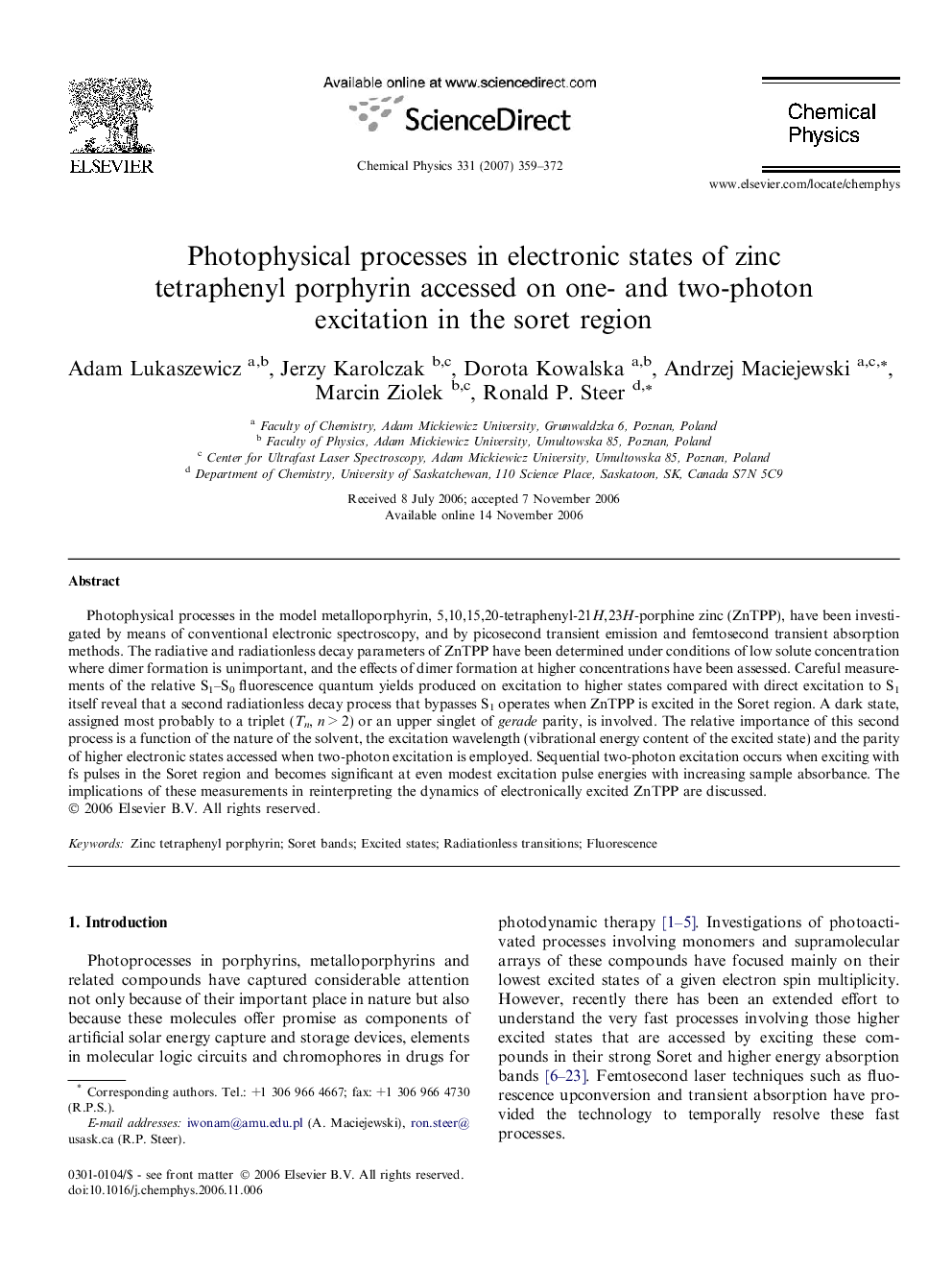| Article ID | Journal | Published Year | Pages | File Type |
|---|---|---|---|---|
| 5376576 | Chemical Physics | 2007 | 14 Pages |
Abstract
Photophysical processes in the model metalloporphyrin, 5,10,15,20-tetraphenyl-21H,23H-porphine zinc (ZnTPP), have been investigated by means of conventional electronic spectroscopy, and by picosecond transient emission and femtosecond transient absorption methods. The radiative and radiationless decay parameters of ZnTPP have been determined under conditions of low solute concentration where dimer formation is unimportant, and the effects of dimer formation at higher concentrations have been assessed. Careful measurements of the relative S1-S0 fluorescence quantum yields produced on excitation to higher states compared with direct excitation to S1 itself reveal that a second radiationless decay process that bypasses S1 operates when ZnTPP is excited in the Soret region. A dark state, assigned most probably to a triplet (Tn, n > 2) or an upper singlet of gerade parity, is involved. The relative importance of this second process is a function of the nature of the solvent, the excitation wavelength (vibrational energy content of the excited state) and the parity of higher electronic states accessed when two-photon excitation is employed. Sequential two-photon excitation occurs when exciting with fs pulses in the Soret region and becomes significant at even modest excitation pulse energies with increasing sample absorbance. The implications of these measurements in reinterpreting the dynamics of electronically excited ZnTPP are discussed.
Related Topics
Physical Sciences and Engineering
Chemistry
Physical and Theoretical Chemistry
Authors
Adam Lukaszewicz, Jerzy Karolczak, Dorota Kowalska, Andrzej Maciejewski, Marcin Ziolek, Ronald P. Steer,
